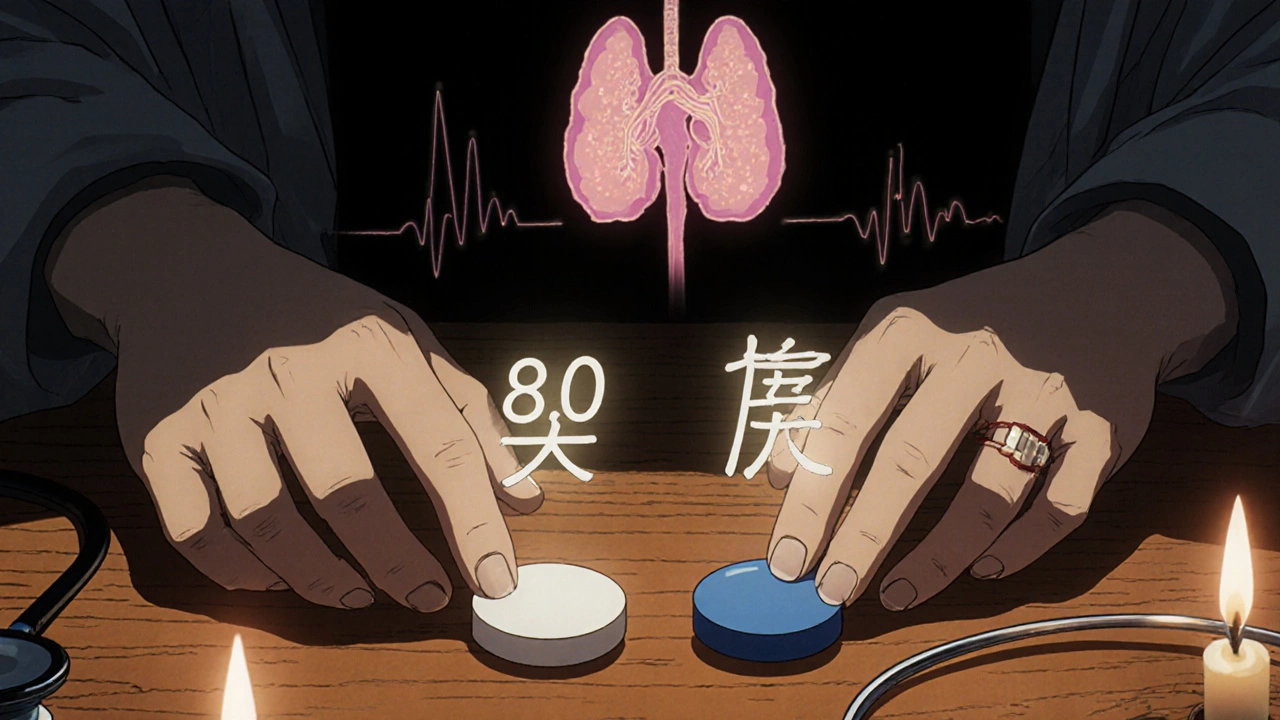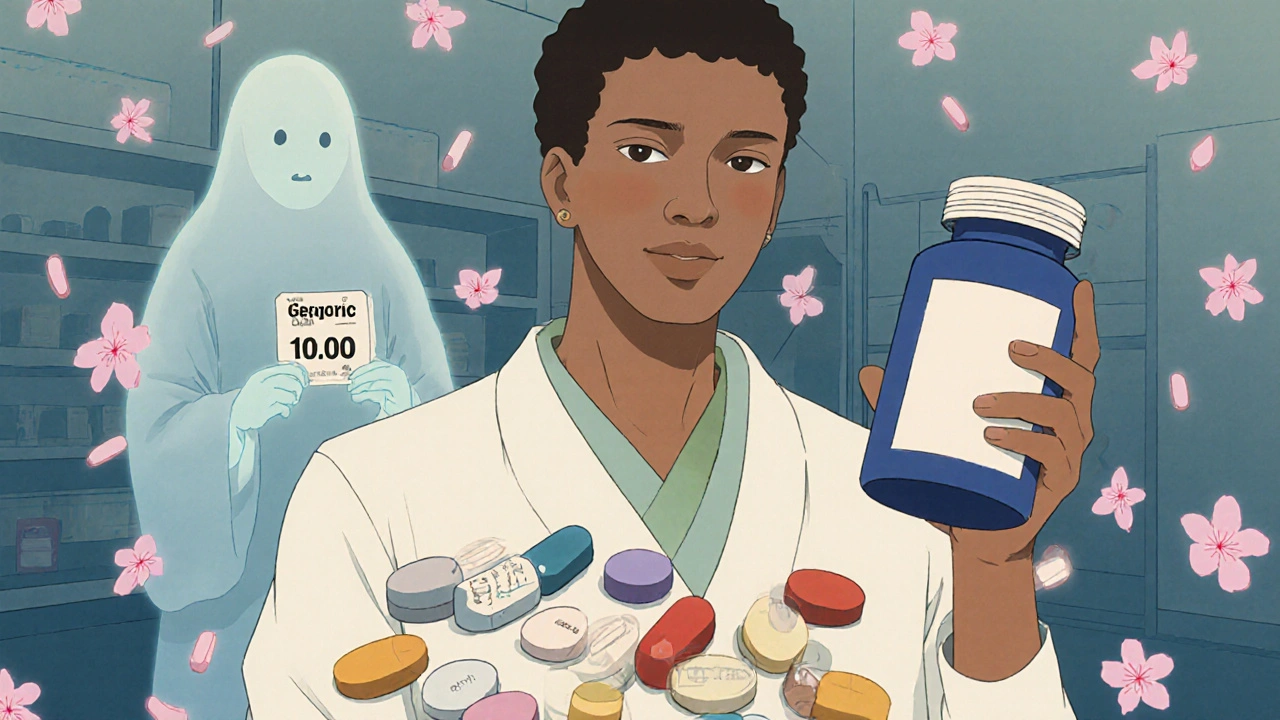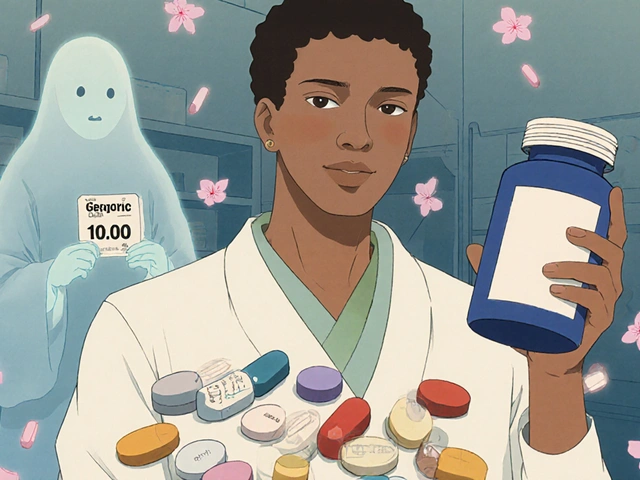Every time you pick up your prescription, you might get a different pill. Same active ingredient. Different color. Different shape. Different brand name on the bottle. If you’ve ever been confused by this, you’re not alone. In Australia, the U.S., and most developed countries, generic medications make up the majority of prescriptions filled - over 90% in the U.S. alone. But behind that number is a hidden reality: you could be switching between five or six different generic versions of the same drug in a single year. And while most people don’t notice a difference, for some, it can mean serious health risks.
Why Do Generics Keep Changing?
Pharmacies don’t switch generics to confuse you. They do it because insurance companies and government programs push for the cheapest option available. If your pharmacy gets a better price from Teva this month instead of Mylan, they’ll fill your script with Teva’s version. It’s not personal. It’s economics. And with dozens of companies making the same generic drug, the choices pile up. The FDA requires every generic to prove it delivers the same active ingredient as the brand-name drug - within a range of 80% to 125% of the original. That sounds precise, but here’s the catch: one generic could be at 80%, another at 125%. That’s a 45% difference in how much medicine your body actually gets between two different generics. For most drugs, that’s fine. For others, it’s dangerous.When Switching Can Be Risky
Some medications don’t play nice with changes. These are called narrow therapeutic index (NTI) drugs. That means the difference between a dose that works and a dose that harms you is tiny. Even a small shift in blood levels can cause serious problems. Three of the most common NTI drugs are:- Levothyroxine (for hypothyroidism): A 10% change in blood levels can throw your thyroid into chaos. Patients report feeling exhausted, gaining weight, or having heart palpitations after a switch - even if the dose hasn’t changed.
- Warfarin (a blood thinner): Too little, and you risk a clot. Too much, and you bleed internally. Studies show INR levels fluctuate after switching generics, sometimes requiring urgent dose adjustments.
- Tacrolimus (for transplant patients): A drop in levels can trigger organ rejection. A spike can cause kidney failure.
What Patients Are Saying
Real people are feeling the effects. On Reddit, one user wrote: “My seizure meds switched from Mylan to Teva. Two weeks later, I had two breakthrough seizures. My neurologist checked my blood levels - they’d dropped by 30%.” Another patient on Drugs.com said: “Every time my levothyroxine changes, I feel like crap for six weeks. My TSH goes wild. I have to go back to the doctor, get a new dose, and wait again. It’s exhausting.” But not everyone has problems. Many people on statins, blood pressure meds, or antibiotics never notice a difference. One GoodRx user said: “I’ve had generic lisinopril for five years. Six different manufacturers. No issues. My BP is perfect.” Studies show about 68% of patients report no problems. But 22% say their meds stopped working. And 10% say they got new side effects. The highest switch-back rates? Antiepileptics (44%) and thyroid meds (33%). The lowest? Statins (8%).
Why Your Pill Looks Different Every Time
Generic drug makers can’t copy the brand’s pill exactly. Patents on shape, color, and markings have expired, so each company designs their own version. That’s why your 10mg lisinopril might be a white oval one month and a blue capsule the next. The problem? Patients often identify their meds by appearance. If your pill changes, you might think you got the wrong drug - or worse, you might stop taking it. One study found 67% of patients rely on how the pill looks to know what they’re taking. When that changes, 11.5% of people end up taking double doses because they think they missed one.What You Can Do
You don’t have to accept random switches. Here’s how to take control:- Ask your pharmacist - “Which manufacturer is this?” Write it down. Keep a small note in your wallet or phone.
- Ask your doctor - “Can I stay on this specific generic?” For NTI drugs, many doctors will write “Dispense as Written” or “Do Not Substitute” on the prescription.
- Check your prescription label - The manufacturer name is printed on the bottle. If it changes, don’t ignore it.
- Monitor your symptoms - If you start feeling off after a switch - fatigue, dizziness, mood changes, irregular heartbeat - call your doctor. Don’t wait.
- Use a pill organizer - If you take multiple meds, a labeled organizer helps you spot changes faster.

What’s Being Done About It
Health systems are starting to wake up. Some hospitals now use “lock-in” programs for NTI drugs - meaning once you’re on a specific generic, you stay on it unless your doctor says otherwise. Pharmacists are being trained to flag high-risk switches. The FDA launched a pilot program in 2023 requiring manufacturers to report major formulation changes. In June 2024, Australia’s Medsafe updated its guidelines to strongly advise against switching levothyroxine brands. The goal? Reduce unnecessary switches without killing cost savings. Generics save billions. That’s good. But if patients end up in the hospital because of a pill change, that’s a failure.Bottom Line
Most generic switches are harmless. But for a small group of people - especially those on thyroid meds, blood thinners, or seizure drugs - each switch is a gamble. You can’t control insurance. You can’t control the pharmacy. But you can control your awareness. Know your drug. Know your pill. Know your manufacturer. And if something feels off after a switch, speak up. Your health isn’t a cost-saving metric. It’s your life.Can I ask my pharmacy to always give me the same generic manufacturer?
Yes. You can ask your pharmacist to fill your prescription with the same generic manufacturer each time. For most drugs, they can do it - especially if your doctor writes “Dispense as Written” on the prescription. For high-risk drugs like levothyroxine or warfarin, this is strongly recommended. Some pharmacies may charge a small fee if the requested generic isn’t the cheapest option, but many will accommodate you.
Why doesn’t my doctor know when my generic changes?
Most doctors don’t get notified when a pharmacy switches your generic. Insurance plans and pharmacies make these decisions based on cost, not medical need. A 2023 survey found that 62% of physicians didn’t know their patients had switched generics until the patient reported side effects or lab results changed. That’s why it’s up to you to track your medication and tell your doctor if anything feels different.
Are generic drugs less effective than brand-name drugs?
For most medications, generics work just as well as brand-name drugs. The FDA requires them to meet the same standards for safety and effectiveness. But for drugs with a narrow therapeutic index - like levothyroxine, warfarin, or tacrolimus - small differences in formulation can lead to noticeable changes in how your body responds. It’s not that generics are “worse,” but they’re not always interchangeable without monitoring.
What should I do if I think a generic switch caused side effects?
If you notice new or worsening symptoms after switching generics - like fatigue, dizziness, irregular heartbeat, mood changes, or seizures - contact your doctor immediately. Bring your pill bottle with you. Ask for a blood test if you’re on a drug like warfarin or levothyroxine. Don’t assume it’s “all in your head.” Document the change: date, manufacturer, symptoms. This helps your doctor connect the dots and possibly switch you back.
Is there a list of drugs that shouldn’t be switched between generics?
Yes. Common drugs with narrow therapeutic indexes that require caution include: levothyroxine, warfarin, tacrolimus, cyclosporine, phenytoin, carbamazepine, and lithium. These are often flagged by pharmacists and doctors. If you’re on any of these, ask your provider if you should stay on one specific generic. Avoid switching unless absolutely necessary.








Sam txf
November 28, 2025 AT 09:02This whole system is a fucking joke. You’re not a patient-you’re a line item on an insurance spreadsheet. I’ve been on levothyroxine for 12 years and switched generics six times. Each time, I felt like a zombie for a month. My doctor doesn’t care. My pharmacist doesn’t tell me. And the FDA? They’re too busy approving new opioid formulations to care if your thyroid goes haywire. Wake up, people. This isn’t healthcare-it’s corporate roulette.
George Hook
November 29, 2025 AT 10:12It’s important to recognize that while the system is flawed, the intent behind generics was never malicious-they were created to make life-saving medications accessible to millions who otherwise couldn’t afford them. The real issue lies in the lack of communication between insurers, pharmacies, and prescribers. We need better tracking systems, mandatory manufacturer labeling on electronic health records, and patient education campaigns. It’s not about stopping generics-it’s about making the transitions safer, more transparent, and less chaotic for those who are vulnerable to fluctuations. The science is clear: for NTI drugs, consistency matters. We just need the infrastructure to match that science.
jaya sreeraagam
November 30, 2025 AT 18:03As someone from India where generic drugs are the ONLY option for most people, I can say this: I’ve seen families choose between food and medicine because brand-name drugs cost 10x more. So yes, generics save lives-but I also know someone who had a stroke after switching warfarin brands because no one told her the lab range changed. We need BOTH: affordable meds AND patient safety. Maybe we can create a color-coded system? Like green for low-risk, red for NTI? And pharmacists should be REQUIRED to give a printed card with the manufacturer name every time? I’ve seen people panic because their pill changed color-imagine if we gave them a simple reference sheet with each fill? Small things, huge impact.
Katrina Sofiya
December 1, 2025 AT 03:08I want to thank you for writing this. As a nurse who works in endocrinology, I’ve seen firsthand how devastating a levothyroxine switch can be-especially for elderly patients who don’t understand why they suddenly feel so tired or anxious. I’ve started keeping a small notebook in my clinic with the manufacturer names of every patient’s thyroid med, and I ask about it at every visit. It’s not in the EHR. It’s not tracked. But it’s the most important thing I do. Please, if you’re on a narrow therapeutic index drug-write it down. Tell your pharmacist. Bring the bottle to your next appointment. You are your own best advocate. And you deserve better than a random pill change.
kaushik dutta
December 2, 2025 AT 10:42Let’s not romanticize the pharmaceutical supply chain. The 80–125% bioequivalence window is a regulatory loophole disguised as science. It’s mathematically absurd-two generics can differ by 45% in bioavailability and still be deemed ‘equivalent.’ That’s not equivalence. That’s a fucking gamble. And the fact that the FDA doesn’t require batch-level tracking or post-market surveillance for NTI drugs is criminal negligence. We have blockchain for crypto, but not for lifesaving meds? The industry is built on opacity. Until manufacturers are forced to disclose formulation changes in real time and pharmacies are legally obligated to notify patients of switches, this will keep happening. And patients will keep dying.
doug schlenker
December 3, 2025 AT 07:31I get that generics save money. I really do. But I also remember my mom switching from one generic warfarin to another and ending up in the ER with a GI bleed. She didn’t know it was a switch. The pharmacist didn’t tell her. The doctor didn’t know. It took three weeks to figure it out. I’m not saying we should scrap generics-I’m saying we need a system where the patient is informed, not just the insurance company. Maybe a simple text alert? Or a sticker on the bottle that says ‘NEW MANUFACTURER-CHECK WITH DOCTOR IF ON NTI DRUG’? It’s not hard. It’s just not prioritized. And that’s the real problem.
Olivia Gracelynn Starsmith
December 5, 2025 AT 07:20For years I took generic lisinopril and never noticed a difference. But then I started on levothyroxine and switched from Mylan to Teva and suddenly I couldn’t get out of bed. My TSH went from 2.1 to 8.9. I thought I was just stressed. Turns out it was the pill. Now I keep a note in my phone: ‘Levothyroxine-Mylan 2024.’ I show it to every pharmacist. I’ve had two who rolled their eyes. One even said ‘it’s the same thing.’ I said ‘then why did I feel like I got hit by a truck?’ They shut up. You don’t need to be a doctor to know when your body’s screaming. Listen to it.
Skye Hamilton
December 6, 2025 AT 09:27Oh great, another ‘patient empowerment’ article. What’s next? ‘Here’s how to fight your toothpaste manufacturer’? The truth? Most people don’t even know what their meds are for. They take them like candy. And now you want them to track which generic they got? Please. The real solution is to stop letting pharmacies switch meds at all. Let the doctor pick one and stick with it. Insurance can go screw themselves. My body isn’t a cost center. And if the system can’t handle that, then it’s broken. Not me.
Maria Romina Aguilar
December 7, 2025 AT 10:49It’s not just the pills... it’s the labels. The caps. The font. The size. The way the bottle feels. I’ve had panic attacks because the pill looked different. Even if I knew it was the same drug. My brain didn’t care. It just screamed ‘DANGER.’ And no one ever told me that’s normal. I’m not crazy. I’m just wired to recognize patterns. And when the pattern changes... I freeze. I wish someone had told me that earlier. I wish I’d known it wasn’t just me.
Brandon Trevino
December 7, 2025 AT 17:4790% of generics are fine. 10% aren’t. The data is clear. The FDA has published studies. The NIH has published studies. The AAFP has published studies. You’re not special. You’re not unique. You’re statistically an outlier. If your thyroid is acting up after a switch, maybe your dosing was never optimized to begin with. Stop blaming the generic. Fix your own lab values. And stop weaponizing anecdotal evidence to scare people into paying more for brand-name drugs. That’s not healthcare. That’s fearmongering.
Denise Wiley
December 9, 2025 AT 03:44I just want to say-you’re not alone. I’ve been there. I’ve cried in the pharmacy parking lot because my pill changed color and I didn’t know if I was still safe. I’ve called my doctor at midnight because I felt like I was going to pass out. And guess what? They listened. They changed me back. You have a voice. Use it. Write it down. Show the bottle. Say ‘I need the same one.’ It’s not rude. It’s necessary. And if they give you attitude? Walk out. Find another pharmacy. Your life is worth more than their convenience.
Hannah Magera
December 10, 2025 AT 02:17I’m new to all this. My dad just started on warfarin and I’m trying to learn. So… if the pill looks different, how do I know it’s the same drug? Is there a website or app where I can look up the pill by color and shape? Or do I just have to memorize every manufacturer’s logo? I want to help him but I don’t know where to start. Any tips?
Austin Simko
December 11, 2025 AT 11:07They’re tracking your pills to sell you ads later. That’s why they change them. So they know when you’re scared. So they can target you with ‘new improved generics.’ Wake up. This isn’t medicine. It’s surveillance capitalism.
Nicola Mari
December 13, 2025 AT 07:30How dare you suggest patients should have to advocate for themselves in a system designed to protect them? This isn’t a democracy. It’s a corporate oligarchy disguised as healthcare. And you’re just another middle-class sycophant who thinks writing down a manufacturer name is ‘empowerment.’ You’re not fixing the system. You’re just learning how to beg better. The real solution? Nationalize pharmaceuticals. Or ban generics for NTI drugs entirely. Anything less is complicity.
Gus Fosarolli
December 15, 2025 AT 00:28My pharmacist once gave me a generic version of my seizure med with a different filler. I didn’t notice until I had a seizure at my kid’s soccer game. Took three months to get back to baseline. Now I hand my pharmacist a printed note every time: ‘DO NOT SUBSTITUTE. MYAN. 2024.’ He laughs. Then he does it. He’s the only one who gets it. So yeah-you’re not crazy. You’re just the only one who’s paying attention.